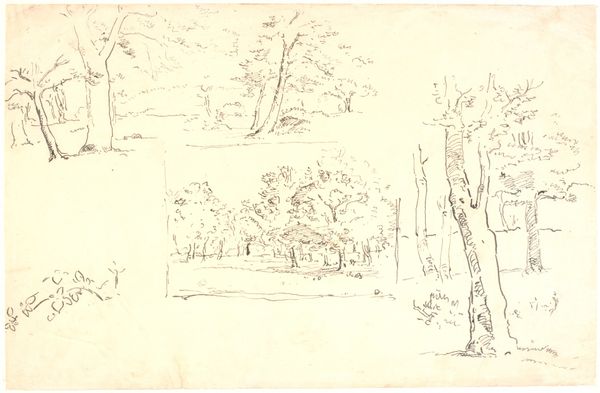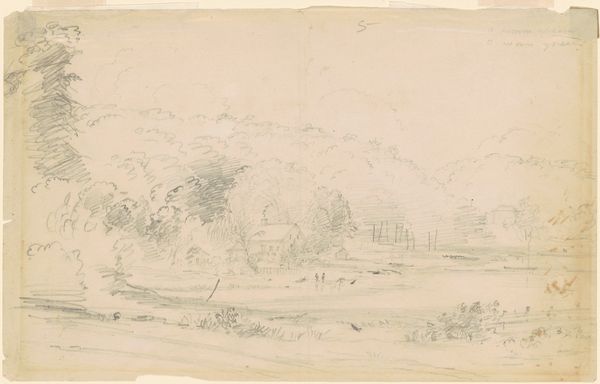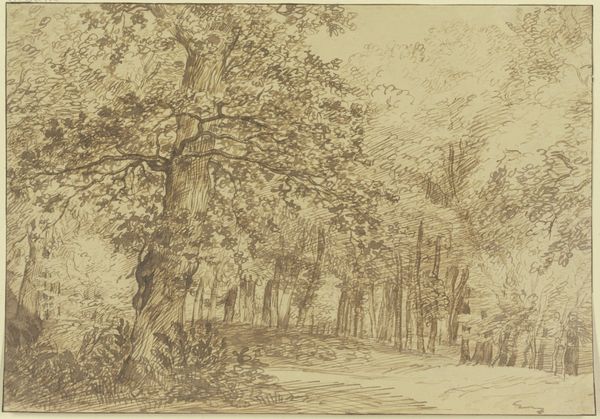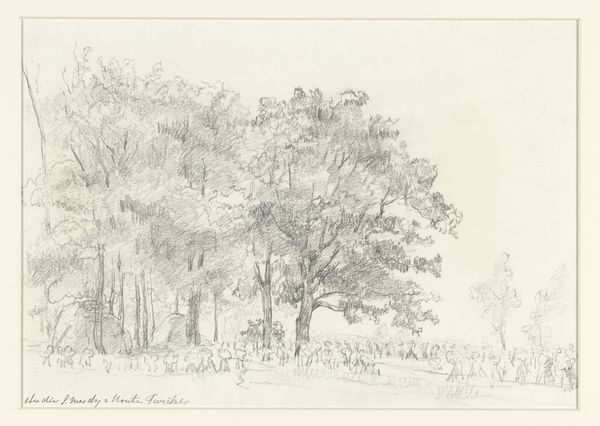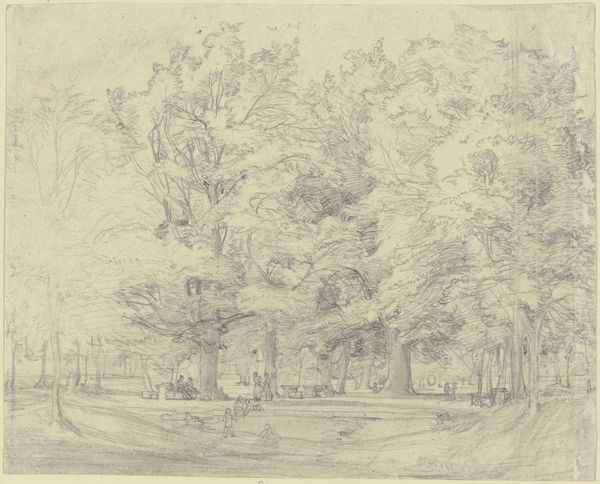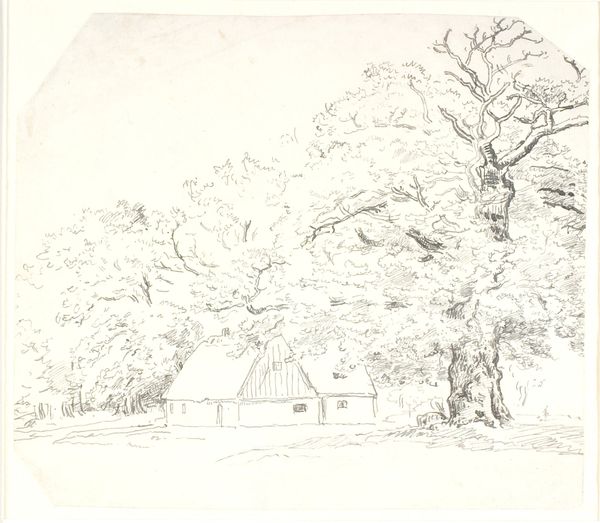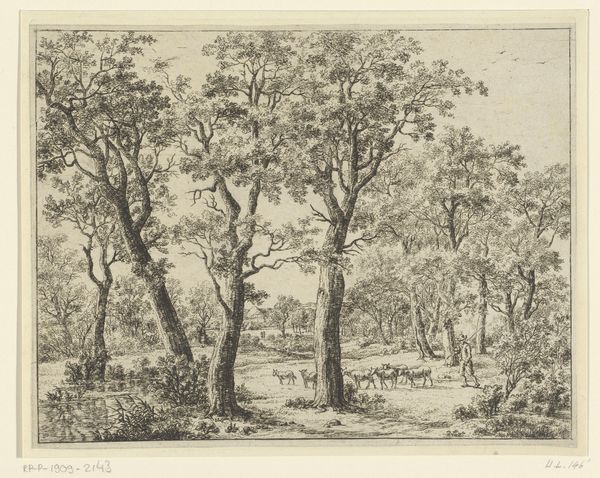
Dimensions: 182 mm (height) x 295 mm (width) (bladmaal)
Curator: This delicate graphite drawing, “Landscape with Bridge,” was created by C.A. Lorentzen around 1779 to 1782. What’s your immediate reaction to this pencil sketch? Editor: It feels hushed, almost secretive. The light barely kisses the bridge, and those spindly trees have such an ephemeral quality. It seems intentionally understated, despite the grandeur of the scene. Curator: Understated indeed. Let's consider the materials. Graphite on paper: simple, accessible. It suggests that the artist prioritised capturing a fleeting moment, perhaps for later elaboration in paint. Pencil as a readily available tool opens art making to a broad sector. Editor: That’s a good point. Think of the market pressures, too. The late 18th century saw a rising demand for picturesque scenes, fueled by the Enlightenment's emphasis on nature. Prints of these drawings would circulate widely. It became a consumable aesthetic. Curator: Exactly! Lorentzen likely anticipated reproducing this sketch, perhaps through etching or engraving, thus disseminating his vision of the idyllic Danish landscape for sale. The pencil strokes themselves are fascinating: swift, economical. Not concerned with permanence, or artifice. The labour is in the land surveying for the perfect angle. Editor: Yes, and notice how the bridge almost dissolves into the foliage. He blurs the line between the man-made and the natural. In doing so, Lorentzen seems to subtly critique the societal structures of his time, where nature was increasingly being tamed and commodified. I imagine similar landscape drawings adorning the walls of wealthy landowners and merchants, reinforcing the politics of land ownership. Curator: Precisely. He both affirms and questions that ownership. I wonder, then, about the provenance of the paper. Where was it made, by whom? Was it a commercial product or hand-made, each contributing another dimension to understanding the economics of its creation. Editor: So true! And while on one hand, this artwork whispers, on the other, it’s a fascinating historical document reflecting class and culture of the period. Curator: Indeed. Every detail reveals layers of historical context interwoven into a seemingly simple landscape drawing. Editor: Well, I’ll certainly view landscape drawings differently from now on. Curator: As will I. Always much more than meets the eye!
Comments
No comments
Be the first to comment and join the conversation on the ultimate creative platform.
